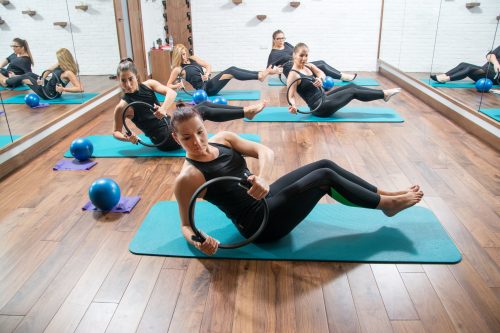We’ve looked into how much exercise it would take to power some pretty complex, major appliances in our How Much Exercise series, but today, we’re going to consider the humble light bulb.
The idea of using human effort to turn on the lights may not be that unfamiliar to you. If you have a well-stocked emergency kit, you may even have a hand-crank LED flashlight or two in there. After several minutes of vigorous cranking (which is more exhausting than it looks, if you’ve never tried it) you can find your way around in the dark without digging into your supply of batteries.
From Watts to Lumens
In terms of calculating calories and wattages to find out how much effort it would take to fight the forces of darkness, light bulbs used to make the math pretty easy. When incandescent bulbs were the norm, the wattages were always printed right on the bulbs themselves. We chose the brightness of our bulbs based on wattage alone.
But things have changed for the better with the introduction of compact fluorescent (CFL) bulbs, and more recently, with LED bulbs. These newer designs can put out light just like the old-fashioned incandescents, but they use a fraction of the power in the process. So instead of buying bulbs based on wattage like we used to, today’s bulbs are marketed based on lumens, a unit of measurement for the amount of light produced.
A 100-watt incandescent light bulb produces around 1,600 lumens from those 100 watts. But a CFL bulb can produce just as many lumens using only about 20 watts, and an LED bulb can do it even more efficiently at around 18 watts. LEDs are longer lasting, too, helping you save on both your electricity bill and on light bulb replacement.
Because lumens aren’t tied directly to wattages, there tends to be a little variance in the actual wattages of energy-efficient light bulbs at any given lumen level. But the difference is negligible; 1,600 lumen LEDs can range from about 16 to 20 watts, 1,100 lumen LEDs usually use between nine and 13 watts, and 800 lumen LEDs come in around eight to 12 watts.
How Many Calories Does It Take to Power a Light Bulb?
The amount of human energy it takes to metabolize a single calorie is equal to 4.1868 watt-seconds, and one watt-second is the amount of energy required to sustain one watt of electricity for one second. So for a 100-watt incandescent light bulb, the amount of calorie burn required to light it up for one second is:
100 watts ÷ 4.1868 watt-seconds = 23.9 calories
But why use an inefficient incandescent bulb when we can use an LED that’s just as bright but uses a mere 18 watts? To keep the LED going for one second, it only takes:
18 watts ÷ 4.1868 watt-seconds = 4.3 calories
How Much Pilates Would It Take to Keep the Lights On?
In the past, we’ve chosen some appropriately high-intensity exercises to power up our major appliances, such as skipping rope to run our dishwasher or pedaling a stationary bike to keep our refrigerator cold. But since light bulbs have become so energy-efficient, let’s take a break and choose a more relaxing exercise like pilates.
According to the Compendium of Physical Activities, pilates generates three METs, or metabolic equivalents. In order to determine the caloric burn rate of pilates, we’ll also need body weights, so we’ll use the average adult weight in kilograms for men and women as reported by the Centers for Disease Control and Prevention: 88.76 kg for men and 76.43 kg for women.
We can calculate how many calories the average man and woman will burn during an hour of pilates by multiplying the METs of the activity by their weights, which yields:
3 METs x 88.76kg = 266.28 calories per hour for men
3 METs x 76.43kg = 229.29 calories per hour for women
Next, let’s take a look at how many calories it would take to power each of these light bulbs for an hour. There are 3,600 seconds in an hour, so for each of our bulbs:
3,600 seconds x 23.9 calories per second = 86,040 calories per hour for the incandescent bulb
3,600 seconds x 4.3 calories per second = 15,480 calories per hour for the LED bulb
Given these totals, the average man would have to do pilates for 13 days, ten hours, 59 minutes and 59 seconds to power the 100-watt incandescent bulb for an hour, but only two days, nine hours, 59 minutes and 58 seconds to power the 1,600 lumen LED bulb.
For the average woman, it would take 15 days, 15 hours, 14 minutes and 43 seconds to power the incandescent bulb, and two days, 19 hours, 30 minutes and 46 seconds to power the LED.
When you put it that way, switching to LEDs really does pay off.

